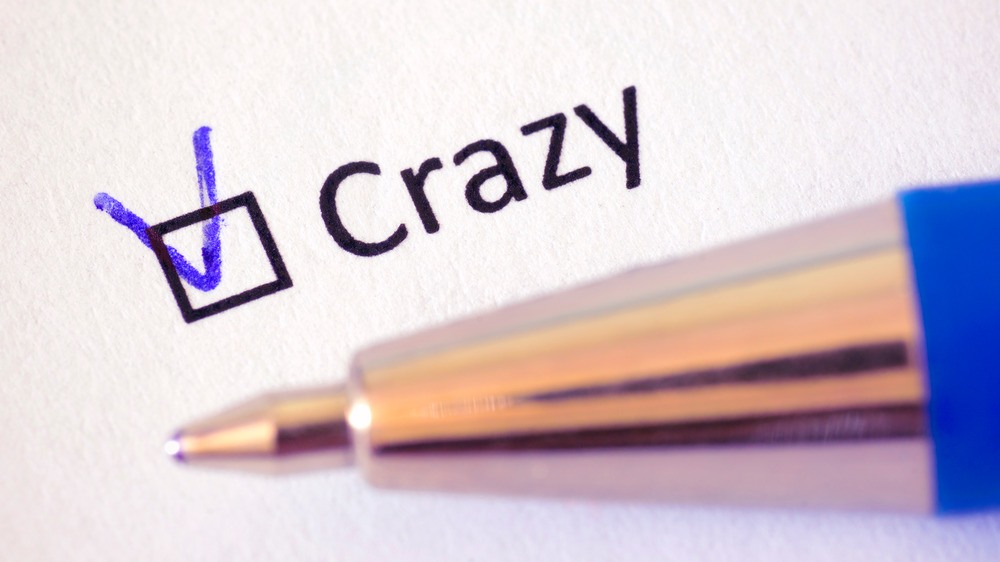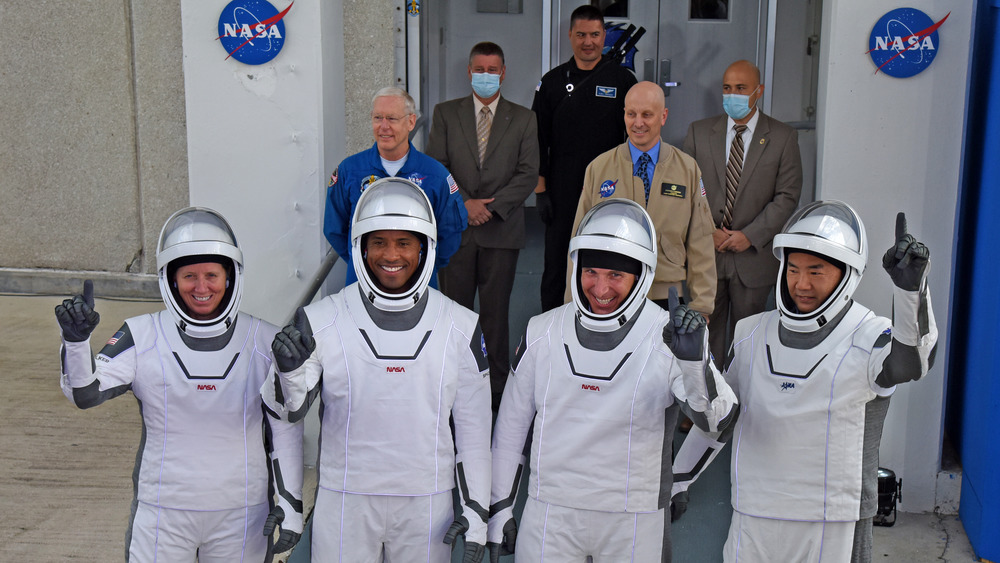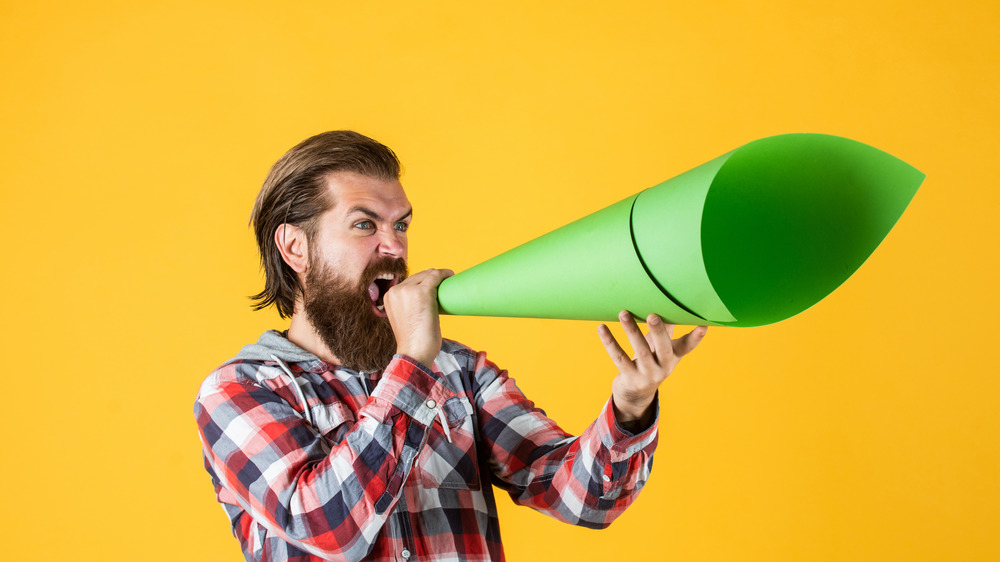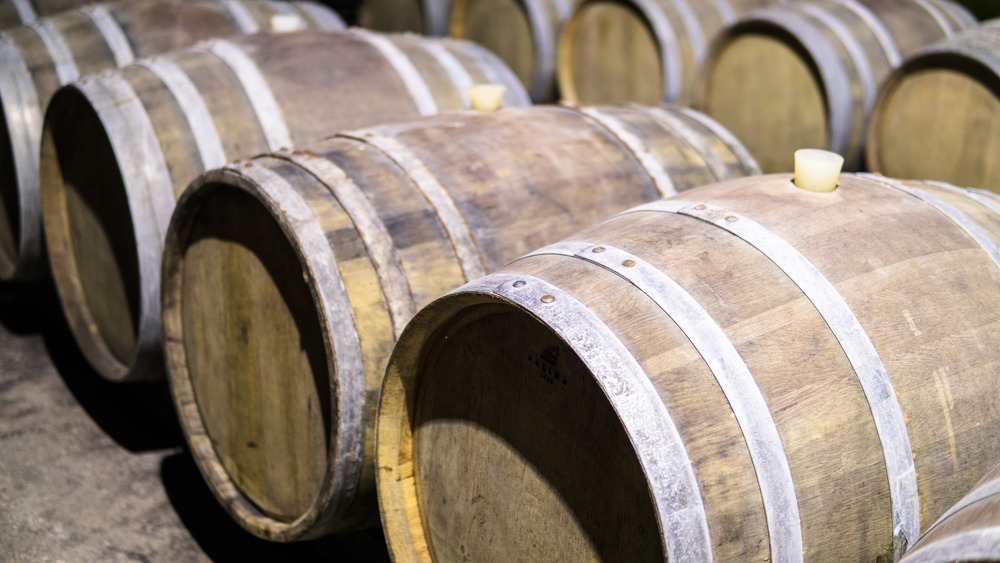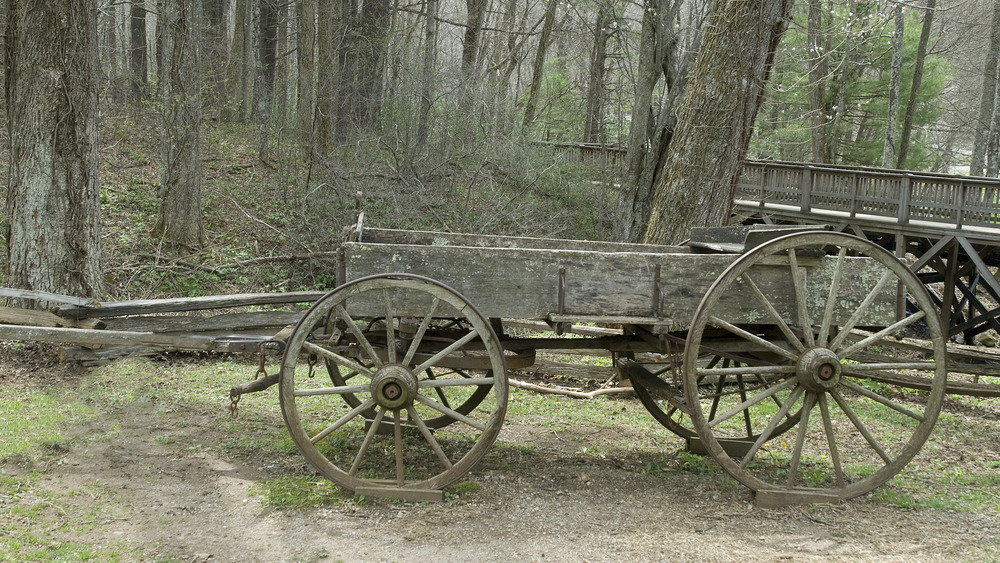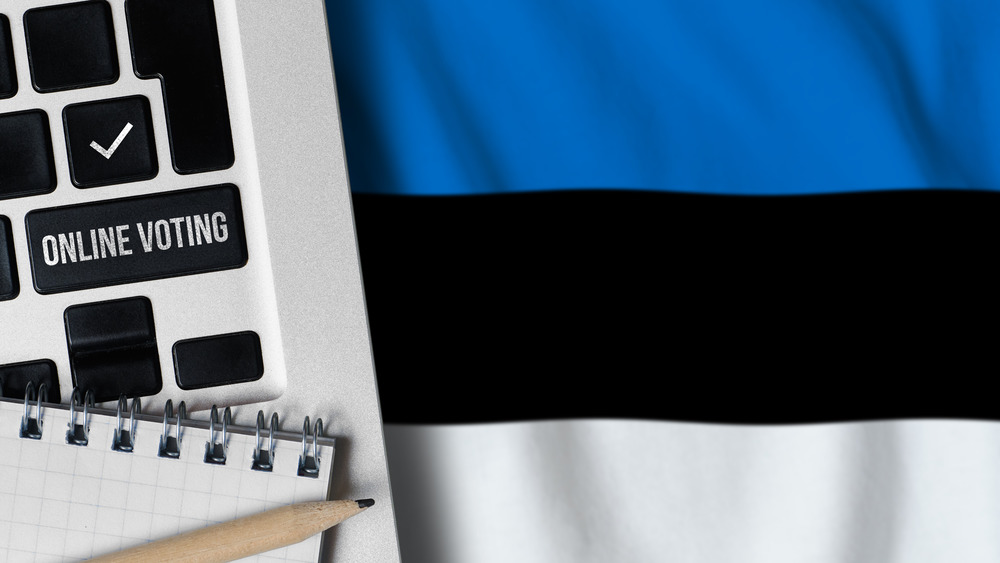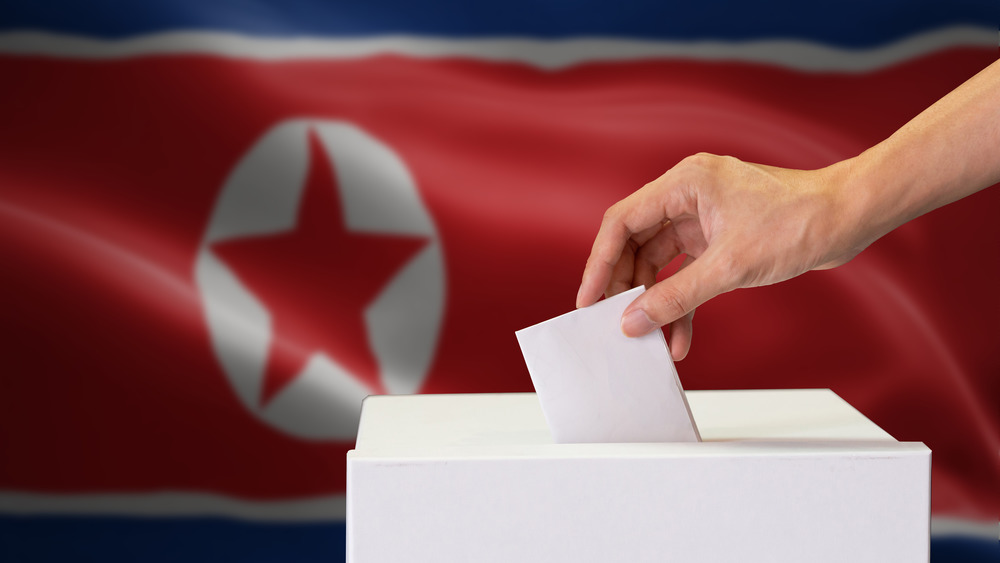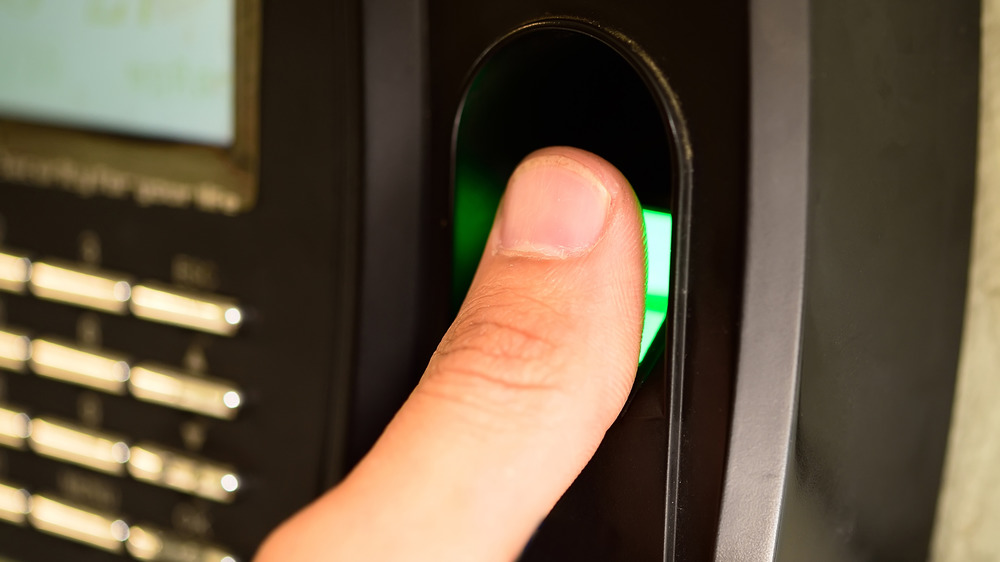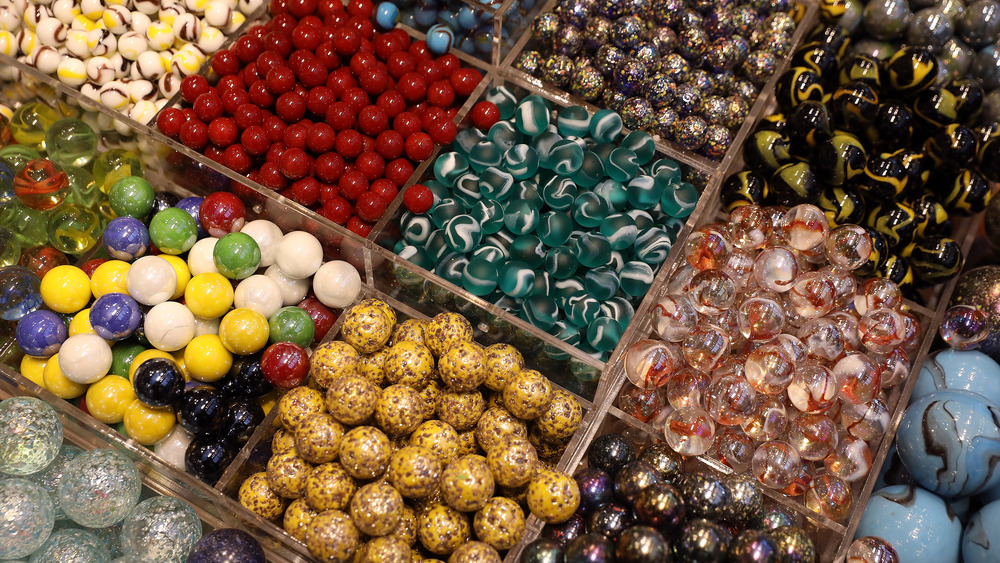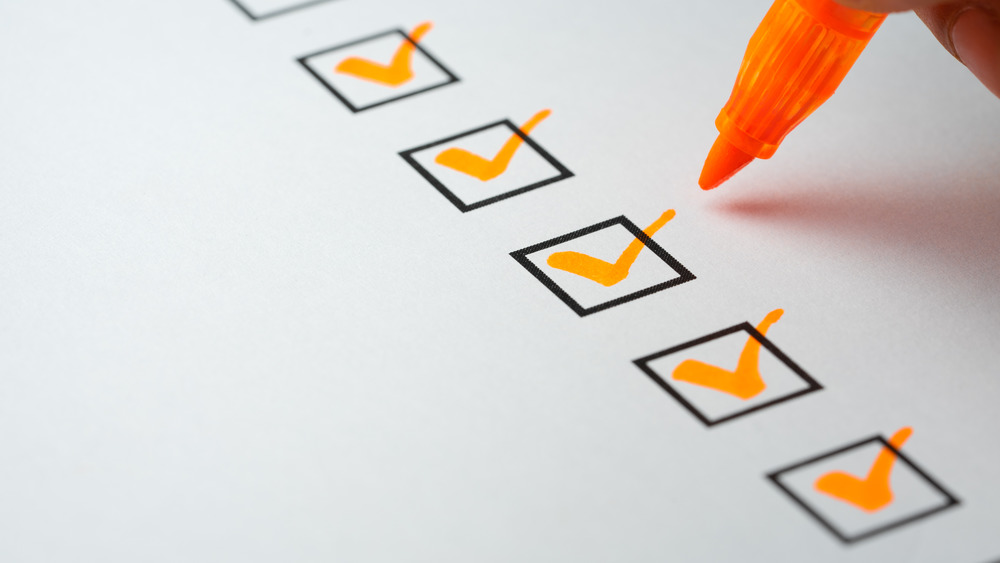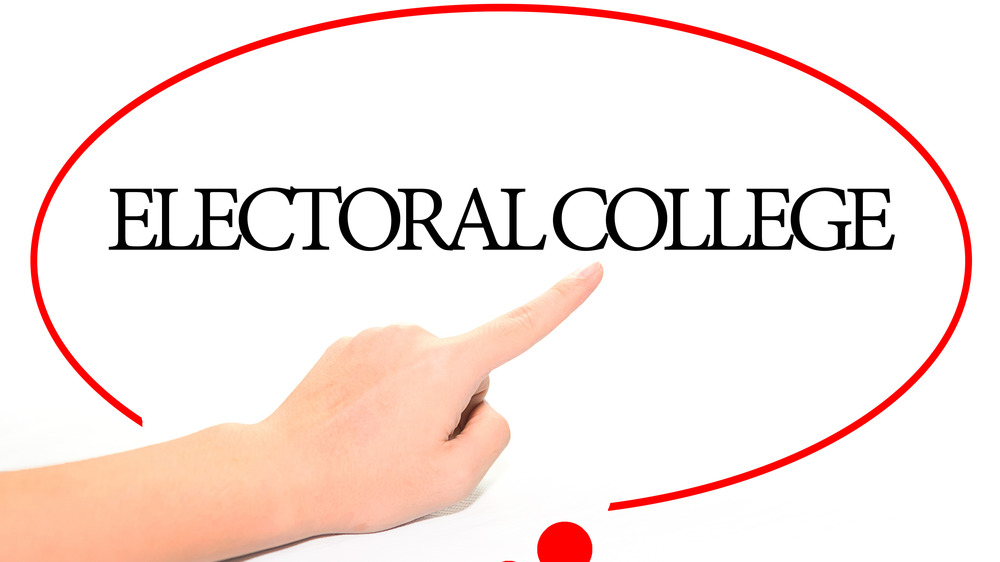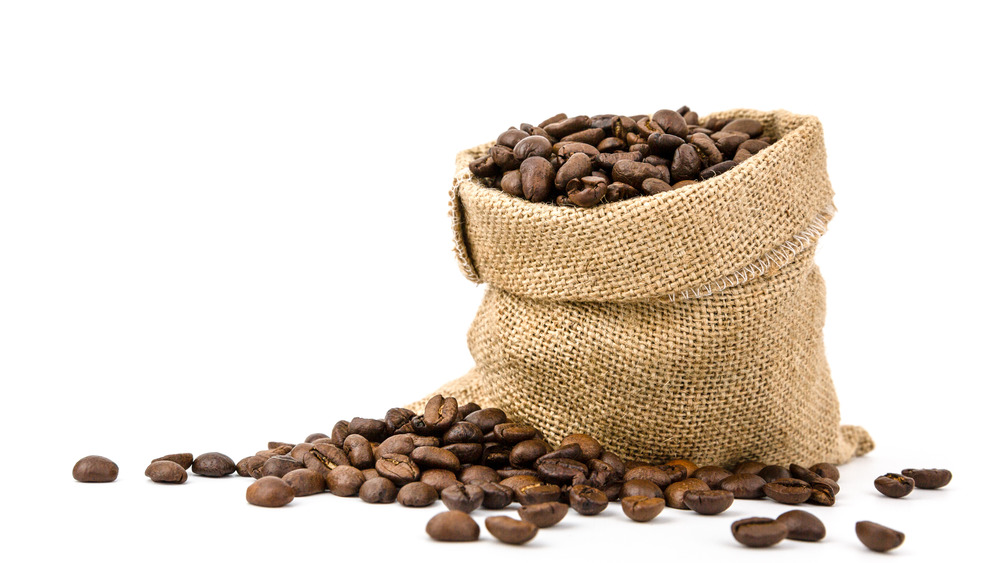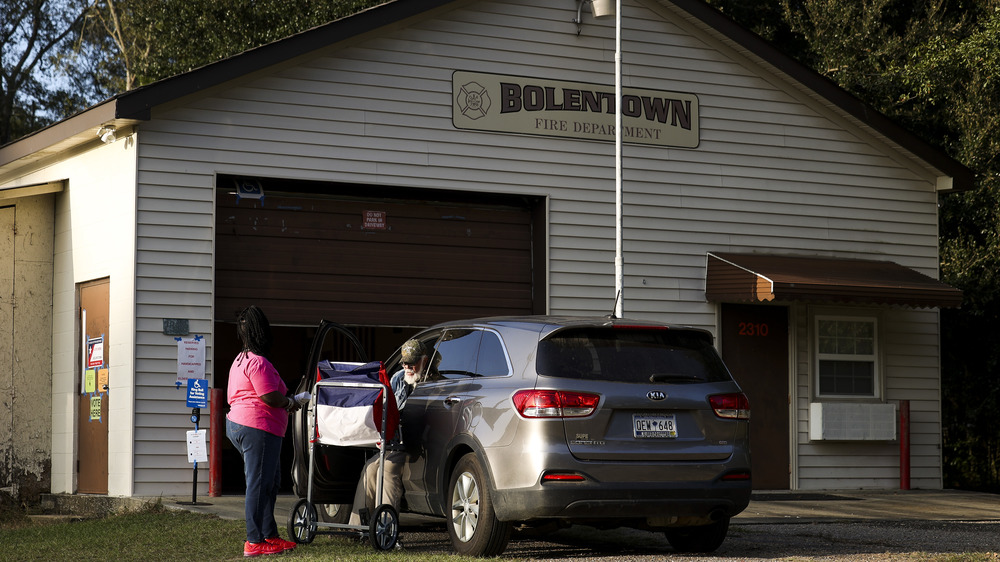The Weirdest Ways People Have Voted
For a system that's over 2,000 years old, democracy seems the same everywhere. Candidates say things, voters decide who they trust, and the winner is decided by the basic math of who had more ballots to their name. But like many things humans create or attach themselves to — making them weird is par for the course.
In the United States, there are many different ways to vote as each of the states has their own process. Georgia uses electronic voting machines, while Alaska uses paper ballots. Anyone over 18 and can vote in this country, except for two cities in Maryland where that right extends to anyone over 16.
Humans adapt easily to all manner of different situations, and voting is no different. Here are some weird ways in which people all over the world vote.
Voting in space
For almost 60 years, Americans have been traveling to space. And for just over the last 20 years, there has been at least one American living in space full time. So for the last six presidential election cycles, there has been a need for a really, really absentee ballot so that American astronauts on the International Space Station (ISS) can cast their vote.
The process of voting from space actually started a year before construction on the ISS even began, and the first vote cast from the final frontier wasn't even for president. In 1997, NPR reported, astronaut David Wolf was serving a mission onboard the Russian space station Mir, and he needed to vote. Lucky for Wolf, the Johnson Space Center is in Texas, and Texas was gonna make sure that Texans could vote. So the legislature passed a bill, and the governor signed it, establishing a process for voting in space.
NASA developed special software so that Texas election clerks could create a ballot, basically a password-protected Word document, and send it to mission control in Houston, who then email it to the spacecraft. The astronaut votes and emails it back, where the county clerk then processes it. As Mary Ann Daigle, former county clerk for Galveston, who has processed many space ballots told NPR, "It's kind of exciting when you open up your computer in the morning and you've got a message from outer space."
Voting out loud
A secret ballot is not only normal in the 21st century, in most places it is the law. It is your vote, and nobody needs to know who you cast it for. How weird it is, then, that for most of the first 100 years of United States history, secrecy was nigh impossible because you probably voted out loud. From the colonial period through most of the 19th century in fact, according to the Magazine of the National Endowment of the Humanities, "viva voce — literally, 'with the living voice' — was how George Washington, Thomas Jefferson, and Abraham Lincoln would have voted, and were themselves voted into office."
Voting was an event back then, a social occasion. Folks would trot down to their local polling place where a raised platform was usually erected. Individuals climbed up and voted where everyone could see you and hear the announcement of the chosen candidate(s). An election clerk was on hand to record each voter and their vote for the public record.
Voting was public in large part because the idea that your vote should be private was seen at the time as undemocratic. It was expected that a voter would vote for the public interest, not private gain. "The voter is under an absolute moral obligation to consider the interest of the public, not his private advantage," the Magazine of the NEH quotes John Stuart Mill. Open voting was another way to hold voters accountable.
Voting in a political party
While society at large has a general interest in people turning out to vote, politicians have a direct vested interest in them doing so. There is a deep well of techniques and tactics that modern campaigns use to Get Out The Vote. But the time honored one, the one all expect, disdain, and demand, is that candidates have to promise stuff. They can't outright pay — that's illegal in every state and (per 18 US Code § 597) federally as well — but it wasn't always like that. For a long time, American politicians basically bribed people to vote for them. Especially with free food and booze.
The Smithsonian Magazine recounts how George Washington attributed his failed first campaign to "his failure to provide enough alcohol for the voters." Two years later he tried again and, after he plied his constituents with "144 gallons of rum, punch, hard cider and beer," this time he won. In 1777 James Madison attempted a clean campaign, absent "the corrupting influence of spiritous liquors, and other treats," which went as well as you would expect.
During the 1860 presidential election, the Democrats attracted 20,000 to 30,000 people to a "Grand Political Carnival and Ox-roast." Sixteen years laters, New York Republicans hosted a massive campaign barbecue for around 50,000 people, which the Smithsonian quotes the New York Times, calling it "one of the most magnificent affairs of the kind ever held in this neighborhood."
Travelling to vote
Part of the reason elections were allowed to be such festive affairs wasn't just that people then were starved for entertainment — though there is some truth to that — but many of them had to travel a good ways in order to take part. As the Khan Academy explains, for the first few hundred years of American history, more people lived in rural areas than urban. It wasn't until well into the 20th century that most Americans lived in cities. Before that, many voters had to actually travel for a day or more to cast a ballot.
They also didn't come all at once. According to the Mapping Early American Elections Project, "States held elections at various times from March through November of the year preceding the opening of a new session of Congress." So voters would come in a few at a time over a certain period, depending on the state, and sometimes in wagons, trains, or huge parades organized by a candidate or political party.
The flexibility required to vote like this however — with the times, dates, and locations for voting all under state control — left local election officials with a great deal of power. That they needed to be able to accommodate the often lengthy travel requirements for voters also meant they could close the polls early to prevent particular voters, say from an opposing party or persons of color or a different religion, from voting at all.
Voting online
These days voting is much easier. There are no day long trips, over rough terrain, for voters to embark on. At most you hop on a bus or drive or walk to your local polling precinct and wait in line for your turn — an average of just under nine minutes, according to the Bipartisan Policy Center. Unfortunately some Americans traded in a day-long trip for a day-long wait, sometimes over ten hours says the Guardian.
In other parts of the world, voting has changed even more with the times. For 15 years, Estonian citizens have been able to vote online. Global cybersecurity expert Joseph Carson actually lives in Estonia and told Government Technology Magazine that, "The introduction of Internet voting was a normal addition to the ever-increasing digital services that Estonia already had, such as online tax returns ... to online digital banking." If you regret your vote, you can go back and change it! In fact, Estonians can vote multiple times before the polls close and only their last vote will be recorded.
Only around 30% of Estonians opt to vote online, and traditional forms of voting by mail or even in-person are still options for everyone else. Carson also pointed out that "in the current pandemic ... Estonia can continue offering a safe option for citizens to vote."
Voting only yes or no
No matter how easy it is to vote, getting people out to vote is a task which frustrates every candidate and campaign. Heck, as the New York Times explains, Australia has mandatory voting, and they still don't have 100% turnout. For all its myriad faults, the Democratic People's Republic of Korea, better known as North Korea, has in fact had a stable government with a functionally perfect voter attendance.
First of all, yes they really do have elections in North Korea. Every five years, North Koreans cast ballots on a number of different positions, from the Supreme People's Assembly (their national legislature) on down to local community councils and institutional administrators' seats. However, CNN describes, unlike western democracies, there is always only one name on the ballot for each position, and voters decide "Yes" or "No" for each lone candidate. Of course, all candidates are pre-selected by the party.
The real catch, per the Japan Times, is "Observers also say the government uses the mandatory elections as an unofficial census, keeping track of whether and how people voted, and interpreting any rejection of preselected candidates as treason." So when North Korean state media reports a 99.98% voter turnout, and Kim Jong-Un got 100% of the vote, they are probably, contrary to (or maybe right in line with) what you might expect from a dictatorship really telling the truth.
Voting with your fingers
New advances in voting technology are made all the time. Paper ballots have been phased out in favor of electronic voting machines in many places around the world, as nations like Estonia are experimenting with online voting. For the past several years, many countries around the world, but particularly in Africa, have been trying out biometric voting — that is voting with your fingerprints, iris scan, or facial recognition.
According to Global Citizen, over 25 African countries have tried to implement some form of fingerprint voting, with varying degrees of success. Ghana's system collapsed in the middle of election day, while in Kenya, their equipment batteries died, delaying the results for over a week. Security issues plague many of the biometric voting systems and, as Albanian Exit News explains, it is one of the concerns as that country prepares to implement biometric voting.
Biometric security features are being installed in passports or identification cards in places like the Philippines and Bangladesh right now, according to Biometric Update, which "facilitates easy proof of identity via fingerprint biometrics, iris scans and facial recognition" for voter verification. Meanwhile in Nigeria, Africa's largest democracy, reports Biometric Update, the government is looking to start electronic and biometric voting by next year and is actively looking for contractors to build an integrated biometric voting system.
Voting with marbles
One of the biggest obstacles for representative government is that it kind of requires an educated population to work and, as the nonprofit Our World in Data shows, it has only been in the last half-century that literacy has become the global norm. The Gambia was one of many nations gaining independence during the African decolonization period of the mid-1960s, and their struggle with widespread illiteracy led to a unique way of voting.
Voters in The Gambia don't use paper ballots. Or electronic ballots. Or voting booths really. Gambian voters face a series of colored iron drums, each drum representing a particular party or candidate and often adorned with party or campaign pictures and logos. Each voter is issued a marble that they drop in the drum of their choice where, according to the ACE Project, it will hit a bell on the way down so everyone knows the vote is legit and counted. But this also means that "on election day bicycles are banned from the immediate proximity of polling stations."
Sadly, as awesomely colorful as this system sounds, The Gambia is actually planning to lose their marbles. The chairman of the Gambian electoral commission told DW this year that the system has just grown too much for marbles to handle everything. "We used to have only two or three contestants," he said. "But today sixteen parties have registered candidates and we also have independent candidates."
Ranked-choice voting
Throughout the English-speaking world, although curiously not in England itself, citizens cast their ballots in a way most Americans would find weird. Instead of voting for a single candidate, voters from Australia to Scotland rank all the candidates in the order they prefer. This system is called ranked-choice voting and is actually used by many millions of Americans already.
As CNN explains, "Voting is counted by round, with lowest-ranked candidates eliminated in each round until only two candidates remain." Candidates must have a majority to win, not just a plurality. In other words, over 50% of voters have to pick you — you don't just beat the other guy. According to the electoral reform nonprofit FairVote, dozens of cities around the country, from San Francisco to Minneapolis, use ranked-choice voting in some way. And it has already begun affecting how some vote for president.
There is no national election for president in the United States. Voting is run by the individual states, so ultimately there are 50 separate presidential elections, each run according to their own rules. In 2020, Maine became the first state to use ranked-choice voting in a presidential election. In addition, Alaska's Ballot Measure 2 passed in November 2020, reports Juneau-based KTOO Public Media. So, it seems like the 2024 election will at least have two states with ranked choice voting.
The electoral college is weird
Democracy may be messy, but it sure is simple — one person, one vote. Those with the most votes, win. Except when they don't. Some systems, in a quest for greater fairness or representation, complicate the one-vote system a bit. Ranked-choice voting, for instance, allows you to literally vote for more than one person, while in Estonia's online system you can vote more than one time. Then there's possibly the most famous example of a complicated voting system: America's electoral college.
Not only is there not a national vote for president in the United States, but in each of the 50 state elections, the people don't technically vote directly for president. According to the U.S. Constitution, "Each State shall appoint, in such Manner as the Legislature thereof may direct, a Number of Electors ...[who]... shall meet in their respective States, and vote by Ballot." Americans vote for the electors, and they vote for president.
In fact, as Minnesota political reporter Eric Black points out, "The Constitution does not require a popular vote in connection with the presidential election." The states can choose their electors anyway they want. South Carolina, for instance, one of the original 13 states, didn't have a popular vote for the first 21 presidential elections. Until 1868, the state legislature chose the electors who chose the president, without asking the voters at all.
Spilling the beans
Paper ballots, electronics ballots, marbles, fingerprints — there as many ways to count ballots as there are ways to cast them it seems. In some of the very first democratic elections in the United States, in all of history in fact, voters used food as their ballots — specifically, beans.
While the word "ballot" is of Italian origin, ballotta for little ball, the democratic tradition was originally a Greek one. Over 2,000 years ago, the Greeks used beans. According to the website for the BBC History Magazine, "Voters would be given both a white and a black or brown bean, one of which would be placed in a jar. White beans were a 'yes' vote, while the black or brown stood for 'no'." At the end of voting, after everyone's beans had been dropped in the jar, the jar would be opened and the beans counted. Unless someone "spilled the beans" by knocking over the jar accidentally and revealing the votes — supposedly the origin of that phrase.
In colonial America, voters got similarly creative. Pebbles, peas, and even bullets were used as ballots. "Colonial Pennsylvanians," wrote Harvard historian Jil Lepore in the New Yorker, "commonly voted by tossing beans into a hat." According to Lepore, Americans didn't switch to paper voting for any reason other than "it was just easier than counting beans."
Voting in weird places
Voting is serious business. Or so people like to tell themselves. The voting booth is a solemn place where important decisions are weighed, candidates are measured against each other, and choices are cast that potentially affect the lives of many millions of people. But that's no reason not to have fun with it. Polling places and voting locations are selected for their practical benefits to the neighborhood and process of voting — but are they really?
Voters all over America and all over the world have cast their ballots in some funky, strange, and outright weird places. Welsh voters can do so in a hair salon, including one named appropriately "Asylum." English voters can use everything from a pub to a real estate agent, while the Scots have voted in the back of a Ford (according to the Mirror, because the polling officer forgot the keys to the office).
In 2016, Politico complied a quirky list of the weirdest polling places that Americans voted in. Californians were able to vote in surf shops and lifeguard stations. Chicago repurposed a laundromat, and in 2008, Philadelphia actually turned a roller skating rink into a polling station. From Buddhist temples in L.A. to Chicago pool halls to an Iowa tractor barn, Americans have been voting in weird places, apparently for a very long time.
